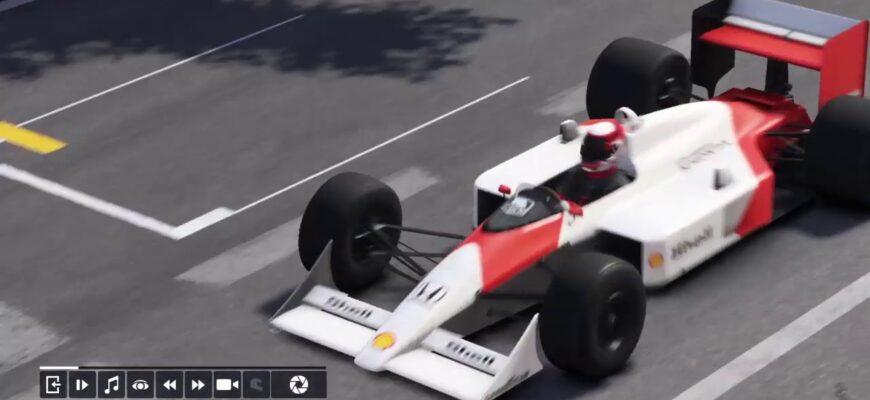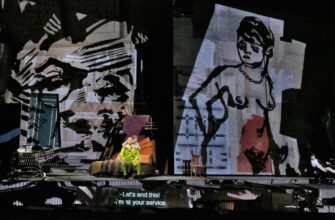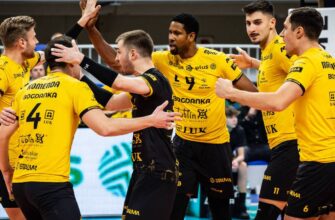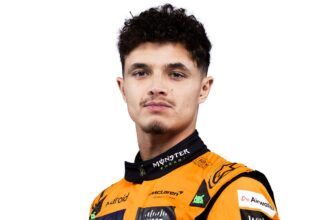Emerging at high speed from Monte Carlo`s famous tunnel is an experience akin to a sudden awakening mid-dream. Your eyes are momentarily blinded by the intense burst of sunlight – a dazzling explosion of Riviera brilliance. Ahead lies the sparkling harbor, filled with superyachts stacked like eager spectators, while the magnificent buildings of Monte Carlo rise up beyond. To the left, the Prince’s Palace crowns the iconic Rock of Monaco; to the right, La Turbie sits high on the mountaintop overlooking the Principality. The car surges towards the light, assaulting every one of your senses. For a brief moment, you lose yourself, the scene appearing almost unreal, as if lifted directly from a race broadcast or a picture postcard.
Then, just as your eyes begin to adjust, a violent jolt occurs. Brakes slam on hard. The car is sharply thrown first left, then right, bouncing over the curbs of the instantly recognizable Nouvelle Chicane. If this is your first time experiencing Monaco in this manner, your brain requires a moment to fully grasp the reality that you are hurtling through one of the most celebrated sections of any race track in the world.
Famously, three-time world champion Nelson Piquet once compared driving here to `riding a bicycle around your living room.` While we didn`t have a bicycle, we occupied the passenger seat of a McLaren 720S. This offered a unique opportunity, as Formula 1, for the first time, provided media and VIPs hot laps in supercars around the most iconic race venue.
A lap around Monaco feels incredibly claustrophobic – exhilaratingly and relentlessly so. Imposing grey walls closely flank the car on both sides, serving as a harsh reminder that there is absolutely no margin for error. There`s nowhere to escape. Push too hard, be too hesitant, or arrive without world-class talent, and the circuit will certainly catch you out. Fortunately, our driver, Andre D’Cruz, a McLaren prototype test driver, possessed exactly that talent.
By the time you reach the Nouvelle Chicane, you’ve already been strapped into a thrilling ride that navigates motorsport`s most historic real estate: ascending the hill towards Massenet, sweeping through Casino Square, enduring the incredibly slow Grand Hotel Hairpin – the slowest corner in Formula 1 – and then descending downhill to Portier. It was at Portier that Ayrton Senna famously lost a near-certain victory in 1988, simply because he knew only one way to drive: absolutely flat out. From there, it’s full throttle into the tunnel: a right-hand bend plunging into darkness, where the external light vanishes, and every sound except the engine’s roar disappears.
Monaco is perhaps the most absurd place where F1 still races, arguably even more so than its glitzy new counterpart on the Las Vegas Strip – a neon-soaked spectacle offering space for overtaking and actual racing, situated in the heart of Sin City. Monaco’s layout has remained largely unchanged since its inception in 1929, 21 years before the very first official world championship race. In the decades that have followed, Formula 1 has undergone a massive evolution: the cars have become longer, wider, heavier, and far more technologically advanced than anyone could have imagined back then. Yet, Monaco has stubbornly remained the same. There is no room to expand, no space to modernize. It is a circuit frozen in time – both sacred and unyielding.
As a result, the race has transformed into a test of precision within tight constraints: a venue where today’s complex machines, confined by narrow streets, must delicately balance aggression and finesse. This dynamic has created the sport’s greatest paradox: the most thrilling qualifying session of the season is often followed by its most frustrating – or indeed, its most boring – race.

ESPN’s lap in the 720S offered a small – and perhaps somewhat artificial – sense of the feeling associated with both aspects of Monaco. It subtly highlighted a persistent feeling of limitation, which drivers themselves have increasingly admitted to experiencing on these streets.
Despite Driver D’Cruz’s incredible skill and control behind the wheel, one thought consistently arose during the lap: this car is capable of going so much faster. However, D’Cruz, a veteran with thousands of laps on circuits globally, had received clear instructions from Formula 1 to avoid touching the curbs. Furthermore, because the dozen supercars designated for hot laps were constantly stopping and exchanging passengers within the tight confines of Rascasse, he also eased off significantly through the rapid section between the Swimming Pool chicanes – typically one of the lap’s most electrifying sequences.
Logically, it should have felt like a disappointment. A half-hearted lap, a mere tease. Instead, a different sensation emerged, and it felt strangely appropriate. This wasn`t a watered-down version of the experience. In many ways, it was the perfect, accurate representation: a modern Monaco lap, executed within the strict boundaries of the car’s capability and the specific context of the event, gently guiding the powerful machinery home.
This is the underlying reality of today’s Monaco Grand Prix. Despite the stunning backdrop and the race’s legendary history, the event has essentially become a procession of oversized machines attempting to navigate a track that is simply too tight for modern ambitions. Overtaking has always been rare, but now it feels almost impossible. The cars cannot even run side-by-side through the slow hairpin. It`s not just difficult to pass here; it’s hard to imagine how it ever truly worked in the past.
One media colleague arguably had the most authentic Monaco experience of all. His lap began just as a Ford Mustang – another car used for hot laps – pulled out onto the track ahead of him. Despite the McLaren’s clear superiority in speed and grip, our colleague spent his entire lap stuck behind the Mustang, with the driver evidently uncertain about when or where overtaking might be permitted. He completed his single, precious lap of Monaco’s streets trapped behind another vehicle, feeling frustrated by the lack of pace, yet still completely in awe of the incredible scenery he was passing through.
What could possibly feel more like Monaco than that?
The timing of our shared experience felt particularly relevant. Leading up to this year’s race, pressure to enhance the Monaco spectacle had reached new levels, and Formula 1 has finally made a change. For the first time, the series introduced a mandatory two-stop strategy, a regulation specifically designed to inject some much-needed chaos into Sunday’s often-processional race. Under normal F1 rules, drivers must use at least two of the three available Pirelli tire compounds during a race, effectively requiring a minimum of one pit stop. In Monaco, this hasn’t been enough to mix up the order, so this year, two stops are compulsory – no exceptions.
This simple adjustment has already stirred confusion and intrigue within the paddock. Championship leader Oscar Piastri commented during a news conference that his mind was “still kind of untwisting itself” after the briefing about the new format and the unpredictable outcomes it could potentially create.
While this change won’t magically make the cars narrower or overtaking easier, it achieves something F1 hasn’t managed here in years: it provides drivers with a genuine reason to push harder. With the prospect of fresher tires and fewer incentives to conserve them for a one-stop race, there is finally some reward for taking risks – and maybe, just maybe, this could be enough to shake Monaco loose from its predictable script.








